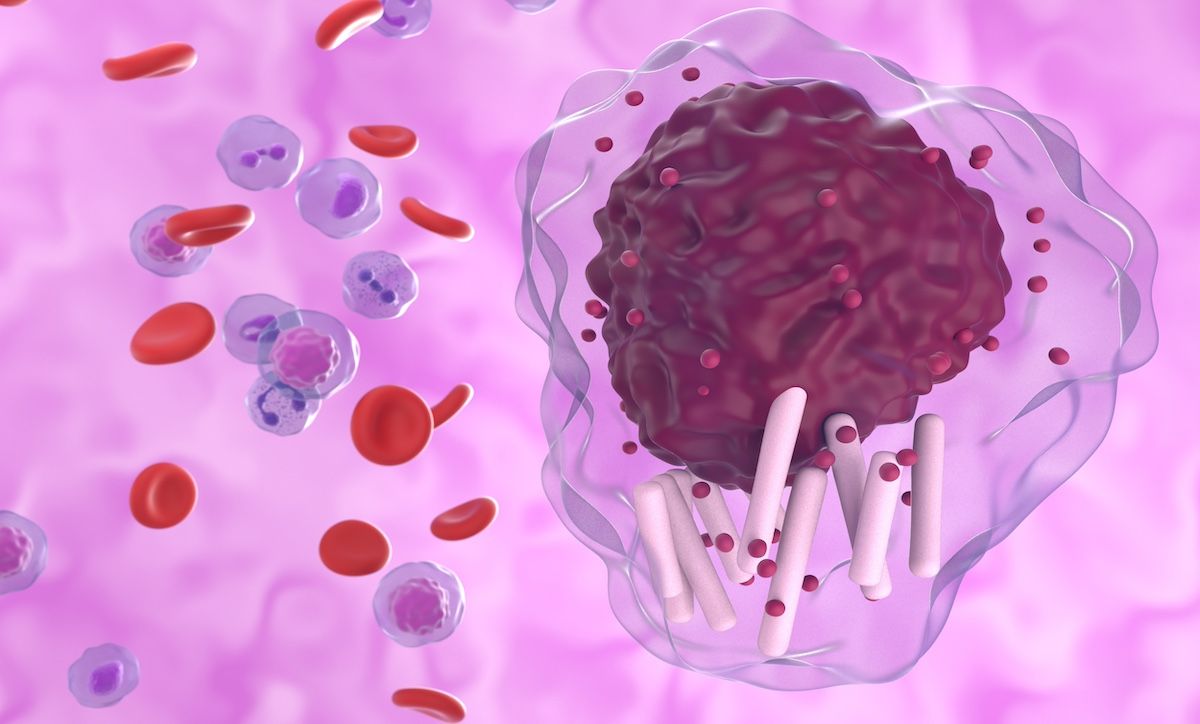- Center on Health Equity & Access
- Clinical
- Health Care Cost
- Health Care Delivery
- Insurance
- Policy
- Technology
- Value-Based Care
Next-Gen BTKis Show Efficacy, Safety Edge Over Ibrutinib in Real-World Setting
An abstract presented at the 2024 American Society of Clinical Oncology annual meeting showed that patients treated with zanubrutinib or acalabrutinib had more favorable safety and efficacy outcomes.
Real-world data presented at the 2024 American Society of Clinical Oncology Annual Meeting suggest favorable outcomes with next-generation Bruton tyrosine kinase inhibitors (BTKis) over their first-generation predecessor.1
The retrospective, observational data, coming from over 3000 patients treated with a BTKi for their chronic lymphocytic leukemia (CLL) or small cell leukemia (SLL), provide another 5 months’ worth of follow-up from a previous analysis. Patients received 1 of 2 next-generation BTKis—zanubrutinib (Brukinsa; BeiGene USA) or acalabrutinib (Calquence; AstraZeneca)—or first-generation ibrutinib (Imbruvica; Pharmacyclics and Janssen Biotech).
CLL cell in blood flow | Image Credit: © laszlo - stock.adobe.com

The majority of patients (92%) received first-line (1L) treatment in the study. Notably, the zanubrutinib sample size was smaller than that for the other BTKis, with 7.2% of patients receiving zanubrutinib, 49.3% receiving ibrutinib, and 43.4% receiving acalabrutinib. Similar treatment patterns were observed in the second line and beyond. All patients were seen at community oncology centers and began treatment between January 2020 and July 2023, with follow-up continuing through October that year.
After 9 months of treatment, cardiovascular adverse effects were lowest for zanubrutinib (8.5%) but were also lower for acalabrutinib (9.4%) than for ibrutinib (14.6%), consistent with previous data showing more favorable safety associated with second-generation BTKis.2 A trend toward favorable cardiovascular safety with zanubrutinib was observed after longer follow-up.1
Median follow-up ranged from 6 months with zanubrutinib to 14.2 months with acalabrutinib and 20.5 months with ibrutinib. Across patients receiving ibrutinib as 1L treatment, 12.7% switched to either zanubrutinib or acalabrutinib. Time to discontinuation was shortest for ibrutinib (median, 13.7 months; 95% CI, 12.2-16) and was similar between acalabrutinib (19.2 months; 95% CI, 15.1-25.3) and zanubrutinib (19.3 months; 95% CI, 14.1-not reached).
Median time to next treatment (TTNT) was not reached among the 203 patients receiving zanubrutinib (95% CI, 16.7-not reached), who had the highest probability of still continuing their 1L treatment at 1 year (75%). Among the 1223 patients receiving acalabrutinib, median TTNT was 35.8 months (95% CI, 29.8-not reached) and among the 1389 patients receiving ibrutinib was 30.2 months (95% CI, 26.2-35.5). Probability of remaining on 1L treatment was 66.3% for patients receiving acalabrutinib and 67.3% for patients receiving ibrutinib.
As the researchers noted a need for further research to explore and validate the favorable outcomes with zanubrutinib over acalabrutinib, other data presented at the conference pointed to a survival improvement with zanubrutinib other next-generation BTKis. A network meta-analysis from 3 randomized controlled trials—ALPINE, ELEVATE-RR, and ASCEND—indicated statistically significant improvements in PFS for zanubrutinib compared with acalabrutinib in patients with high-risk disease, as well as a trend toward improved overall survival, overall response, and complete response.
“Given the lack of head-to-head trials comparing BTK inhibitors in high-risk R/R [relapsed/refractory] CLL patients, we undertook a network meta-analysis to estimate the relative efficacy of available treatments,” Mazyar Shadman, MD, MPH, associate professor and Innovators Network Endowed Chair, assistant medical director, Cellular Immunotherapy, Fred Hutch Cancer Center and University of Washington, said in a press release on the findings.3 “We found zanubrutinib to be the most efficacious BTKi for patients with high-risk R/R CLL, offering significantly delayed disease progression and favorable response compared with the other BTKi treatments in the analysis, including acalabrutinib.”
References
1. Hou JZ, Blanc S, Maglinte GA, et al. Real-world Bruton tyrosine kinase inhibitor (BTKi) treatment patterns and outcomes among patients with chronic lymphocytic leukemia or small lymphocytic lymphoma (CLL/SLL) in US community oncology practices. Presented at: 2024 ASCO Annual Meeting; May 31-June 4, 2024; Chicago, IL. Abstract e19020. doi:10.1200/JCO.2024.42.16suppl.e19020
2. Tam C, Thompson P. BTK inhibitors in CLL: second-generation drugs and beyond. Blood Adv. 2024;8(9):2300-2309. doi:10.1182/bloodadvances.2023012221
3. BRUKINSA data at ASCO underscore differentiated clinical profile for treatment of CLL and SLL. News release. BeiGene USA; May 24, 2024. Accessed June 6, 2024. https://www.businesswire.com/news/home/20240524702722/en/BRUKINSA%C2%AE-Data-at-ASCO-Underscore-Differentiated-Clinical-Profile-for-Treatment-of-CLL-and-SLL
